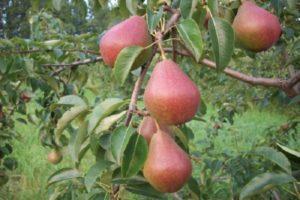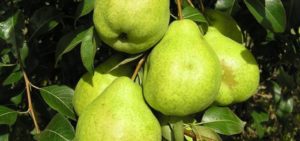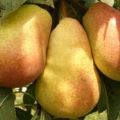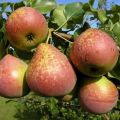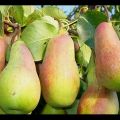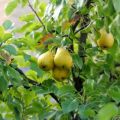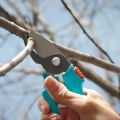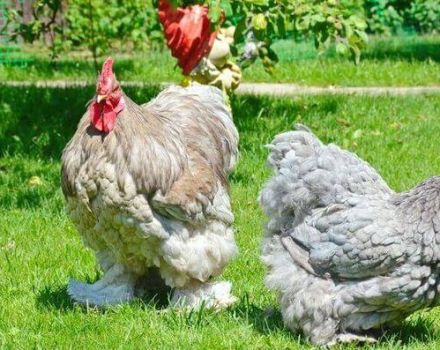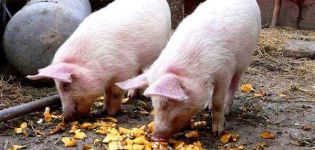Description and characteristics of Nika pear varieties, planting scheme and care
The Nika pear has a lot of positive qualities. It belongs to the young varieties. It received the main distribution in the Black Earth Region. Nowadays, many gardeners are planting trees on their plots. The fruits of the variety contain a large amount of sugar and vitamin C. They are consumed fresh, and also processed.
Breeding history
The variety is considered relatively new. It was developed in 2002, later it got into the state register of Russia. At the moment, it is grown in the Black Earth Region. A group of breeders from the Michurin Agricultural Institute worked on its breeding. Nika was obtained by crossing the varieties Talgar Beauty and Daughter of Dawn.
Description and characteristics of pear
The description and characteristics of the tree include several points: height, pollinators, frost resistance, fruiting, life cycle, description of fruits.
Important! The Nika variety is considered one of the best selection results..
Pollinating varieties
Nika is partially self-fertile. If you plant it alone, then it will give only a third of the possible harvest. It is recommended to plant it next to pollinators to increase yield. These include:
- Duchess;
- Feria;
- Bereusskaya;
- Williams.
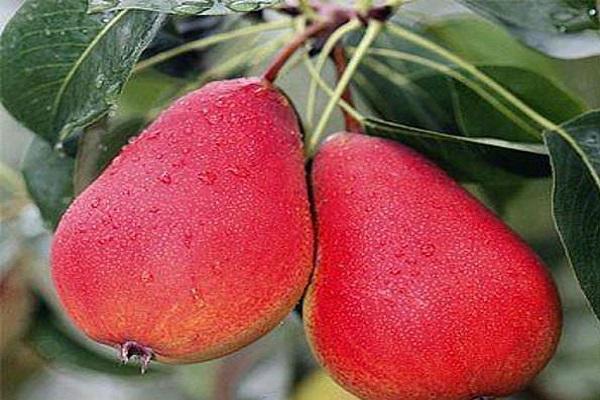
Tree height
The Nika pear reaches a height of about 3 meters. Forms a spherical crown with sparse branching. Uniform growth of branches is a distinctive feature of the variety.
Life span
The average lifespan of a tree is 15 years. Subject to the rules of agricultural technology, creating favorable conditions, carrying out anti-aging pruning, it is possible to extend the life of a pear for a couple of years.
Winter hardiness
Nika is distinguished by its winter hardiness. It easily tolerates temperatures down to -38 ° C. This property manifests itself by the third year of life, until this age it is recommended to mulch and cover the tree trunk.
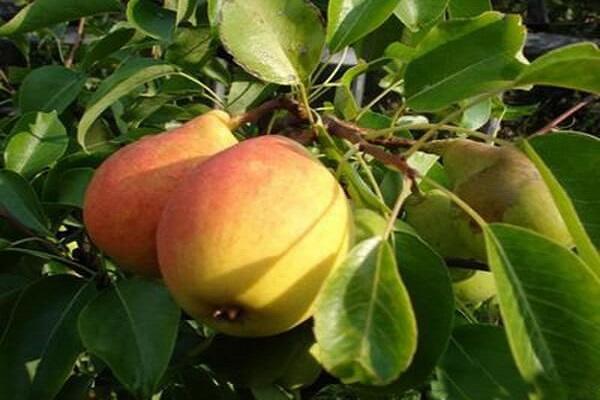
Yield
The Nika variety gives high yields. Fruiting begins at the 5-6th year of the growing season. After season 2, the tree shows stability in the number of fruits. About 50 kg of pears are removed from one pear. Periodic pruning and thinning of the crown increases the number of fruits.
Cyclic fruiting
The tree begins to bear fruit at the 5th year of life. For the first 2 - 3 years, the number of fruits is different.Then the yield levels out, and the pear gives regular high yields. Flowering occurs in early May, during the whole season the ovary and fruit pouring occurs. The harvest is carried out in September. The fruits ripen for another 2 weeks.
Disease resistance
The plant has a high immunity to scab and fungal diseases. This reduces the number of chemical sprays carried out.
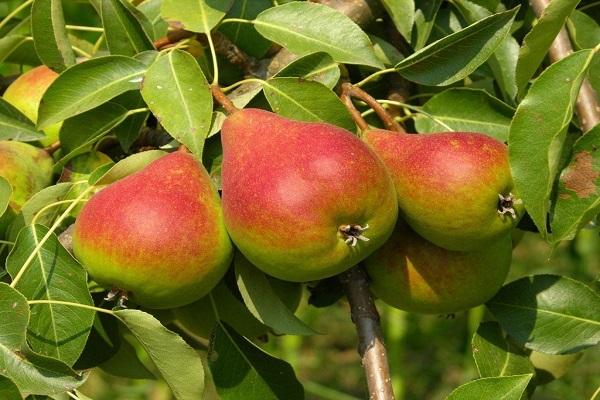
Description of the fruit
Pear fruits are cone-shaped. The size is large, weight is about 200 g. The skin is thin, dense, green when harvested with red spots. The crop is left to ripen for 2 weeks, after which the peel turns yellow. The pulp is creamy, dense, grainy.
Important! Harvested pears are stored for about 4 months, they tolerate transportation well, are suitable for cultivation for sale, and are quickly sold out.
Pros and cons of the variety
Nika has its merits and demerits. The positive aspects include:
- high productivity;
- partial self-fertility;
- high productivity;
- winter hardiness;
- unpretentious care;
- resistance to fungi;
- high taste of fruits;
- transportability.
Among the disadvantages, the desirable presence of pollinators and the constant pruning of the tree for crown formation and sanitation are noted.
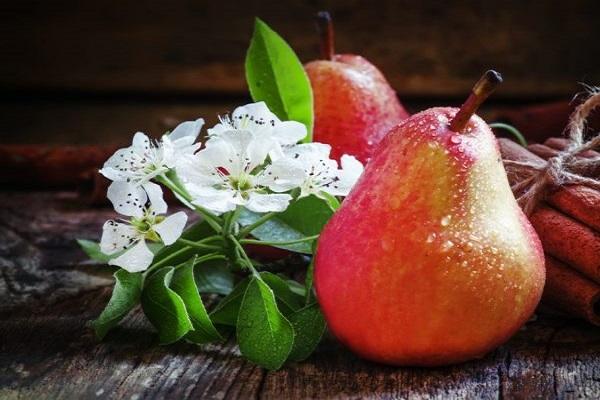
Tree planting rules
The pear has its own planting characteristics. It is necessary to take into account the place, time, choose the right seedling and carry out the manipulation according to a certain technology.
Pick up time and place
For growing Nick's pear, it is recommended to choose well-lit areas with light, airy soil.
The tree is not whimsical to the composition of the soil, but frequent flooding will cause rot in the roots.
Planting is done in spring or autumn. For this, a landing pit is prepared in advance. A hole is dug at the site with a depth and diameter of about 1 m. The earth from the hole is mixed with organic matter and superphosphate is added. Half are laid back.
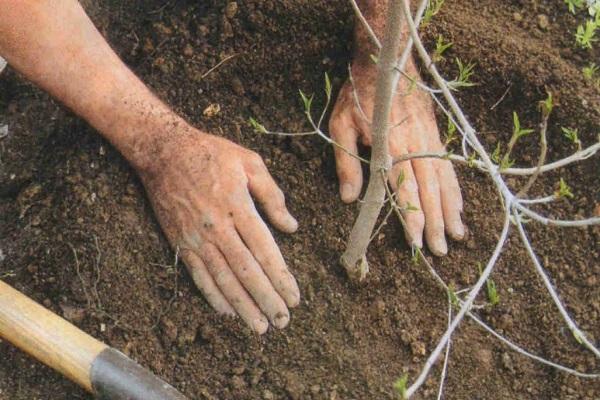
Preparation of seedlings
Young trees can be purchased from nurseries. There are a few things to consider when buying:
- the pear must be one or two years old, it is at this time that it is characterized by high survival rate;
- there should be no chips, cracks, scratches, damage at the root;
- root system without rot and signs of other diseases;
- there should be no signs of disease on the shoots.
Before transferring to the ground, the roots of the seedling are soaked in water for several hours.
Landing technology
Planting in open ground is carried out adhering to a certain technology:
- Dig a hole and prepare it in the fall, but no later than 2 weeks before planting;
- Half covered with soil with fertilizers;
- A tree is placed in the hole;
- Spread the roots;
- Sprinkle with earth layer by layer, compacting each layer;
- Leave a trunk circle with a depth of 8-10 cm;
- Sprinkle with 5 - 6 buckets of water.
Important! To protect the seedling from damage by strong winds, a wooden high stake is driven into the hole in advance and a pear is tied to it.
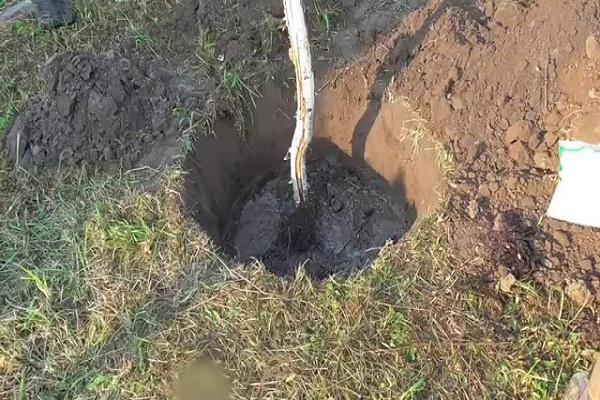
Crop care recommendations
The tree is unpretentious in care, however, compliance with some rules increases the yield and quality of fruits.
Watering
Irrigation is carried out as needed, when the soil in the trunk circle becomes dry. The first watering is done before bud break, the second during flowering, the third after harvesting for the winter. An adult tree consumes 8 - 10 buckets of water at a time.
Pruning
Pruning is carried out in spring and autumn. The first 3 years form a crown in spring. In the fall, damaged, dry and broken branches are removed. They also thin out thickened areas if necessary.

Pollinators
The presence of a pollinator next to Nika is required. This increases the number of fruits and yields. Pears are used for this variety, which have the same flowering period.
Top dressing
There is no need to fertilize the pear for the first 3 - 4 years.The tree gets its nutrition from the organics laid down during planting. Further, mineral complexes containing nitrogen, phosphorus and potassium are used.
Important! Nitrogen is introduced only in spring.
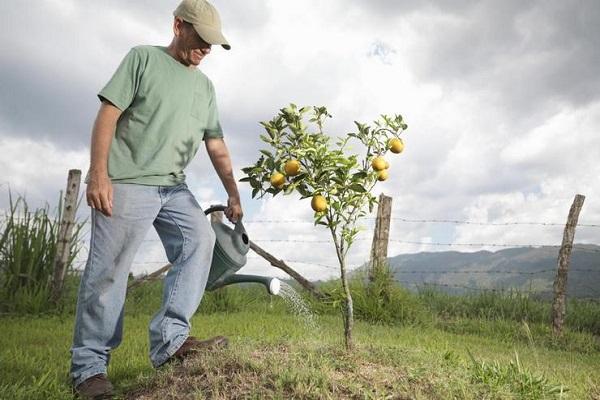
Diseases and pests of pear
Nika has strong immunity. Damage by insects or fungi occurs when the soil is waterlogged and the rules of care are not followed. Diseases are noted:
- powdery mildew;
- burn;
- rust.
To combat them, the foliage is sprayed with a fungicidal preparation.
From insects on the leaves and fruits of a pear, you can see:
- aphids;
- caterpillars;
- the stalk.
Harvesting and storage
Harvesting is done in early September. Pears are removed slightly underripe. The fruits are laid out in boxes and transferred to a cool dark place for storage. In such conditions, they keep for 3-4 months.
